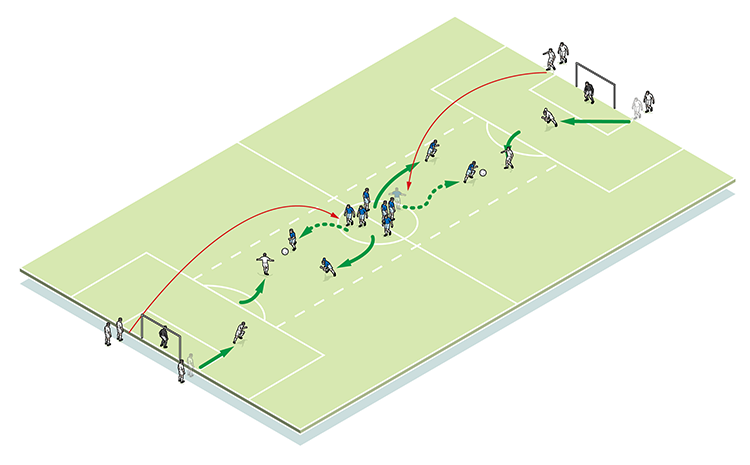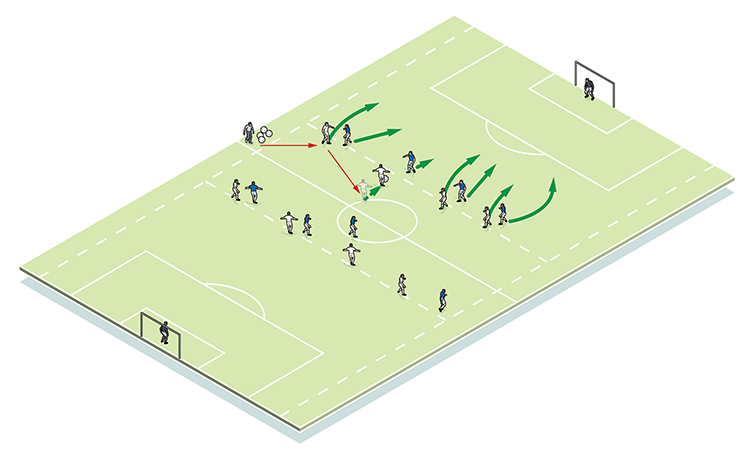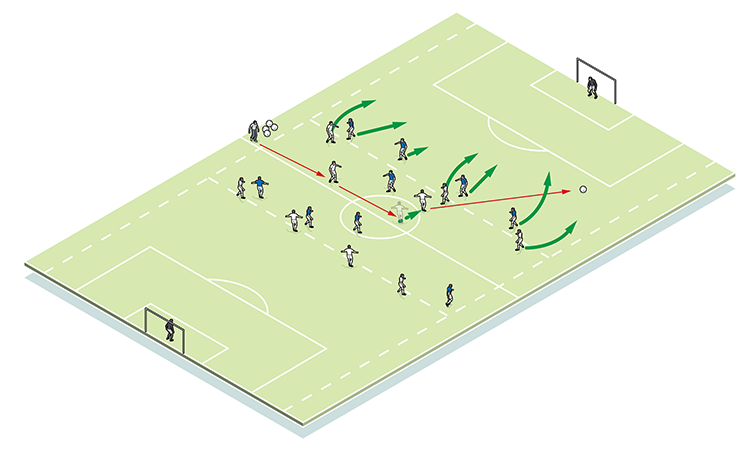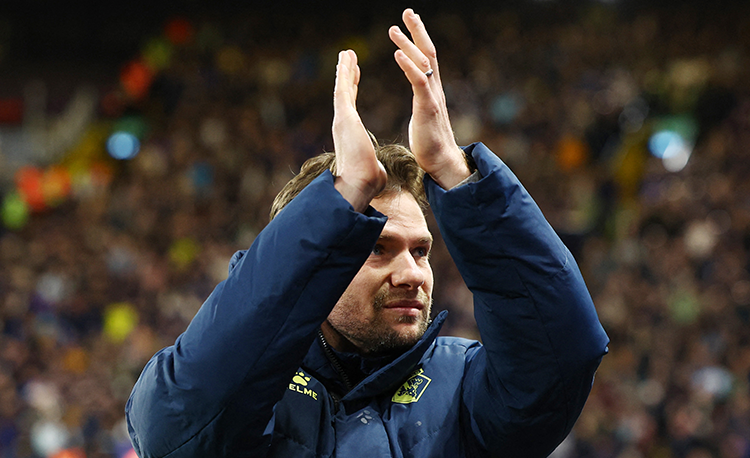You are viewing 1 of your 1 free articles
Attacking and defending in counter-attack situations
Examine the principles behind attacking and defending counter-attack situations quickly – It’s important to practise this because counter-attacks occur regularly in matches, so both defence and attack need to be prepared.
| Area | Full pitch |
| Equipment | Balls, bibs, cones, goals |
| No. of Players | Squad |
| Session Time | Practices 3x20mins, Game 20mins |
This session looks at the principles behind attacking and defending counter-attack situations quickly. It’s important to practise this because counter-attacks occur regularly in matches, particularly in the Premier League.
We construct this session as three separate practices – each slightly different, and each building on the tactical points outlined previously.
What do I get the players to do?
Practice 1
We mark out a 20-yard channel down the pitch and place attackers in the centre circle. Defenders start from behind each goal, which is protected by a keeper.
An attacker is served a ball from behind the goal. As he controls and advances towards goal, a defender takes up position to play out a 1v1 situation (1a).
1a

At the end of the move, players continue their runs so attackers become defenders and vice versa. We then progress this to 2v2s, looking for players to communicate, cover and support recovery runs (1b).
1b

Practice 2
We now narrow the pitch by 10 yards, remove the channel, and mark a 20-yard zone across the middle. Within this central zone there are two unopposed teams of four. Four additional players from each team position themselves outside the zone as defenders.
The ball is served in and the team in possession must break quickly, looking to score (2a). If the opposing team wins the ball, they counter-attack 4v4 towards the other goal (2b).
2a

2b

Practice 3
Now we add a holding midfielder for each team in the middle. This player attacks with his team mates but supports from deep, and also tracks back when defending (3a/3b).
3a

3b

How do I put this into a game situation?
In the game, we remove the width restrictions and the central zone but shorten the length so that play is between the two penalty boxes. We play 10v10 including keepers, but retain a solid back four, encouraging teams to attack in numbers. The small area and large number of players creates numerous opportunities to counter.
What are the key things to look for technically/tactically?
We’re looking for composure from all players, while attackers must come forward at speed, using technical skills such as dribbling, a slick final pass or a clever finish.
Defenders must stay on their feet, delay the speed of the attack, and tackle. We require good communication, intelligent support play and good recovery runs.
Related Files
Editor's Picks
Deep runs in the final third
Using the goalkeeper in build-up play
Pressing principles
Intensive boxes drill with goals
Penetrating the final third
Creating and finishing
My philosophy
Pressing initiation
Compact team movement
Coaches' Testimonials

Alan Pardew

Arsène Wenger

Brendan Rodgers

Carlos Carvalhal

José Mourinho

Jürgen Klopp

Pep Guardiola

Roy Hodgson

Sir Alex Ferguson

Steven Gerrard
Coaches' Testimonials

Gerald Kearney, Downtown Las Vegas Soccer Club

Paul Butler, Florida, USA

Rick Shields, Springboro, USA

Tony Green, Pierrefonds Titans, Quebec, Canada
Join the world's leading coaches and managers and discover for yourself one of the best kept secrets in coaching. No other training tool on the planet is written or read by the calibre of names you’ll find in Elite Soccer.
In a recent survey 92% of subscribers said Elite Soccer makes them more confident, 89% said it makes them a more effective coach and 91% said it makes them more inspired.
Get Monthly Inspiration
All the latest techniques and approaches
Since 2010 Elite Soccer has given subscribers exclusive insight into the training ground practices of the world’s best coaches. Published in partnership with the League Managers Association we have unparalleled access to the leading lights in the English leagues, as well as a host of international managers.
Elite Soccer exclusively features sessions written by the coaches themselves. There are no observed sessions and no sessions “in the style of”, just first-hand advice delivered direct to you from the coach.









